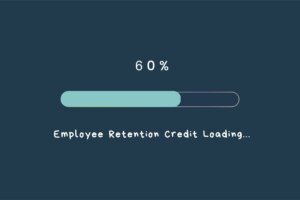There are a number of ways to categorize research on (prospective) donors. One of the obvious ways is by whether or not they are current constituents, another is whether they’ve yet been donors to your organization.
For the first category, your research would be focused on identifying groups of people whose interests might suggest that they’d be interested in your mission and the activities in which you are involved to pursue your mission.
There are companies that compile lists of people based on what magazines they read, what tv shows they watch, where they live, how they vote, at what stores they shop, what websites they visit, what nonprofits they support, etc. You name it, and those companies amass and collect lists of people and their interests.
So, if you’re a nonprofit and you want to identify groups of people who are more likely to want to know more about you, assuming they know that you exist, it would pay to work with, to seek the advice of, one-or-more of those companies.
Then, when you’ve identified lists that fit your criteria, the next step would be to test those lists … usually by mass mailings. You would do additional mailings to those lists that result in the greatest response rates and the greatest dollar return. Part of the process might be to send multiple mailings to the same lists – at different times, to see which people respond to which aspects of your mission and to which of your programs.
That process, donor acquisition, requires an investment … often, a significant investment. And, for any organization that wants/needs to grow, it would be an ongoing investment. (How to fund that investment, in a future posting)
Another, relatively easy way to get lists of names of people who support causes and organizations like yours is to obtain the annual reports of nonprofits whose missions/activities parallel or complement yours. The smaller the community, the more useful those annual reports would be … keeping in mind that those donor lists only include names – no contact or biographical information.
Of course, some of the names on those lists may be highly recognizable – wealthy, prominent people that you’d want to know more about … with the thought that they might become major donors to your organization.
When you get responses to your donor acquisition mailings and you compile a list of names of potential (major) donors from the annual reports, you should probably do some more research.
Those that made “significant” gifts in response to your mailings, and those who are leaders/major donors to similar organizations, should be at the top of your research list.
Your first source for information would be your leadership and current major donors. Do any of them know anyone on the list? Do they know anyone who might know people on the list?
Next is the internet. “Google” those names, see what comes up.
There are also firms that will take your list of names and run them through their databases.
And, there is always the mechanism of a Planning Study, where the prospective donors are interviewed on a face-to-face basis … asking them the questions that would indicate what you’d need to do to get them to want to become (Major) Donors to your organization.
We’ll be on vacation for the next three weeks,and our
Next Posting will be on Sept 9: The Planning Study as Research
=-=-=-=-=-=-=-=-=-=-=-=-=-=
Have a comment or a question about starting, evaluating
or expanding your fundraising program?
AskHank
=-=-=-=-=-=-=-=-=-=-=-=-=-=
Have you heard about
The Fundraising Series of ebooks?
They’re easy to read, to the point, and inexpensive ($1.99-$4.99)
=-=-=-=-=-=-=-=-=-=-=-=-=-=
If you’re reading this on-line, and would like to comment/expand on the above piece, or would just like to offer your thoughts on the subject of this posting, we encourage you to “Leave a Reply.” If you’re reading this as an email, and you want to comment on the above piece, email Comments to offer your thoughts. Your comments, with appropriate attribution, could be the basis of a new posting.
 Sections of this topic
Sections of this topic
















